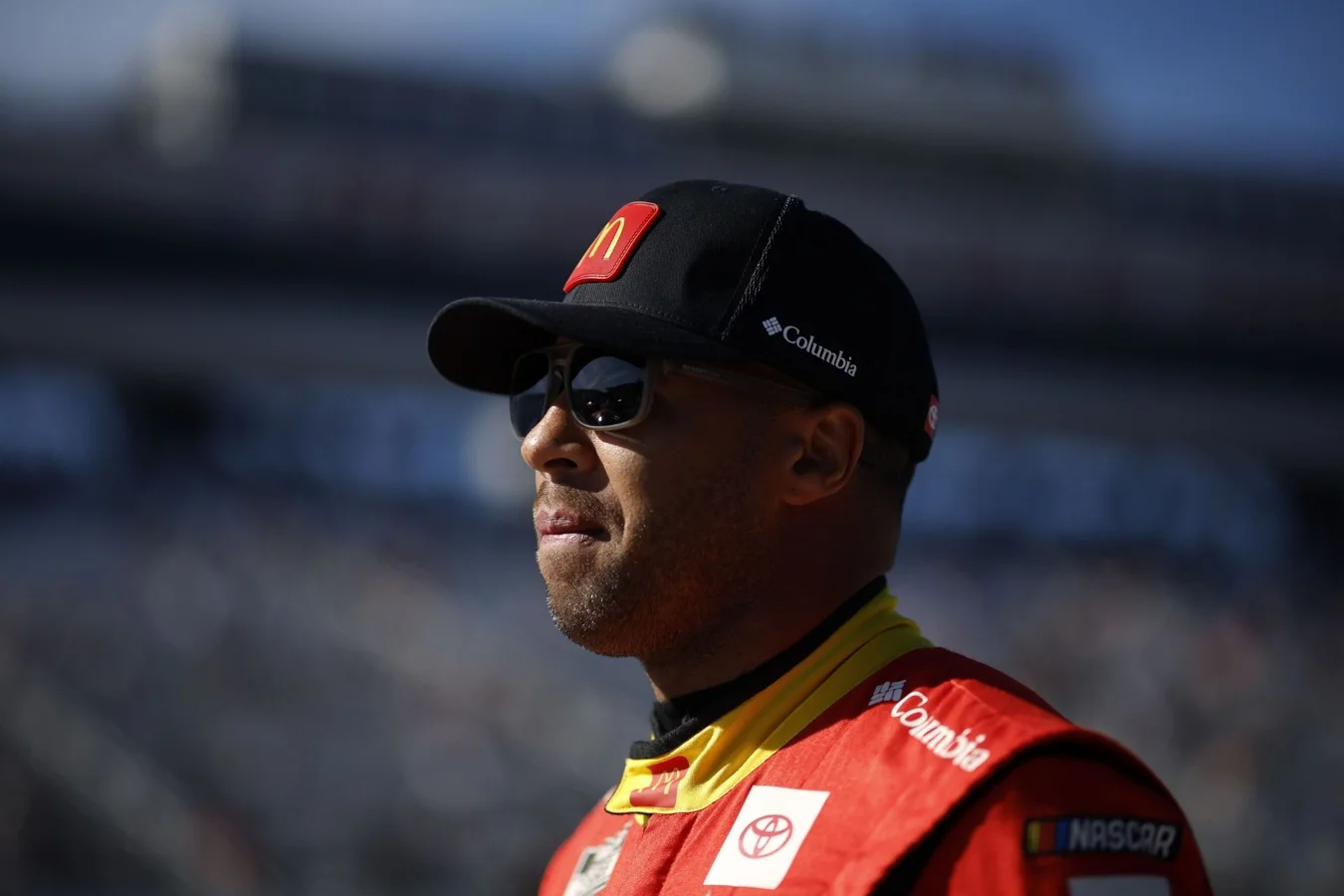The Bubba Wallace NASCAR playoffs viewership controversy intensified after the 2025 Cup Series race at New Hampshire Motor Speedway, with audience numbers dropping to an unprecedented low and raising sharp concerns throughout the sport. On a day when Ryan Blaney claimed a decisive win and playoff tensions ran high, the off-track discussion centered on why fewer fans than ever are tuning in to see drivers like Bubba Wallace fight for a postseason spot.
Playoff Race at New Hampshire Fails to Draw Fans
Returning to the playoffs for the first time since 2017, New Hampshire Motor Speedway promised intense action thanks to competitive racing, evolving pit strategies, and the unrelenting stress of playoff elimination. Yet, the event’s significance was overshadowed by a historic drop in television viewership.
The race attracted only 1.29 million viewers, the lowest audience recorded for a Cup race during the season and marking the first occurrence of four consecutive playoff events failing to surpass two million viewers. Ryan Blaney’s triumph for ford/”>Ford, resulting in a 1-2-5 team finish, underscored the athletic drama on track. But as The Athletic’s Jeff Gluck highlighted, a larger crisis was at play:
“New Hampshire got just 1.29 million viewers. Last year’s Round 2 playoff opener (Kansas) had 1.79 million.”
Freddie Kraft, Bubba Wallace’s spotter, quickly amplified Gluck’s observation, directly engaging with frustrated fans:
“Yikes. And the scary part is last 2 races have been really good races, so what’s the problem? Is it because it’s on USA? Are people just fed up with this car? Is it really cause people dislike the playoffs? If you’re someone that has stopped watching I’d love to hear why?” —Freddie Kraft, Bubba Wallace’s Spotter
NASCAR Faces a Growing Television Crisis
Kraft’s blunt remarks reflect broader anxieties echoing through NASCAR circles. While thrilling competition was delivered at recent events such as Gateway, Bristol, and New Hampshire, these strong on-track performances failed to lift TV ratings. Gateway managed 1.53 million viewers, Bristol 1.54 million, and New Hampshire’s figure represented a staggering drop, considered inconceivable not long ago for such high-stakes playoff fixtures.
This alarming pattern comes at a time when NASCAR drivers, including Bubba Wallace, need every highlight moment and every fan’s attention as they push for playoff survival. Unfortunately, the schedule’s overlap with the NFL season is intensifying the struggle, as more viewers turn their attention to football. Adding to the competition, Formula One has rapidly expanded its American presence, with the Azerbaijan Grand Prix drawing an impressive 1.1 million viewers for a dawn broadcast—narrowing the NASCAR-F1 gap to just 190,000 viewers.
Fans and insiders alike are left debating the causes: ambivalence toward the Next Gen car, disinterest in the playoff format, or evolving media habits in the streaming era. As Freddie Kraft’s public plea suggested, even “really good races” have not been enough to reclaim audience trust and enthusiasm, with many inside NASCAR now openly searching for answers.
Bubba Wallace and 23XI Racing Suffer Unexpected Setback at Loudon
As NASCAR attempts to reverse declining viewership, Bubba Wallace’s own playoff drama added to the sport’s anxieties. Riding momentum from a successful Round of 16 that featured two top-ten finishes, Wallace entered Loudon poised for a strong push. However, a difficult race resulted in a 26th-place finish, causing him to land at the bottom of the playoff driver standings and trailing the cutline by 27 points at a pivotal moment in the postseason.
Freddie Kraft explained the team’s struggle during his ‘Door Bumper Clear’ podcast:
“We were tight and then we got one run. There was a little bit of light at the end of the tunnel… we went further in the same direction and it got worse and then if from that point on… we were a 15th place car. Put the wedge wrench in there you come out 20th. Now your balance is getting worse because you’re deeper in the field… just a snowball effect of a day where we weren’t very good and trying to make it better. We hurt our track position and then never could get it back.” —Freddie Kraft, Bubba Wallace’s Spotter
This disappointing finish left Wallace without any stage points and a lap down due to challenging pit cycles. The struggles extended to the rest of 23XI Racing: teammate Tyler Reddick crossed the line in 21st and, though still ahead of Wallace, stood 23 points below the playoff cutline. These setbacks mean both Wallace and Reddick face an urgent, uphill battle in the upcoming rounds at Kansas and the Charlotte Roval, where every point will determine their postseason fate.
What Falling Viewership Means for NASCAR and Its Athletes
The current television downturn represents a pivotal crisis for the NASCAR Cup Series. Bubba Wallace and fellow playoff drivers are not just fighting for championship survival but also performing under a shrinking spotlight. Declining viewership may affect sponsorship interest, media coverage, and the broader perception of NASCAR as a premier American sport.
With key races ahead, the onus falls on NASCAR to address fan disengagement—whether the root causes stem from scheduling, vehicle rules, or general playoff fatigue. As drivers like Bubba Wallace and Tyler Reddick vie to keep their seasons alive under increasing pressure, the sport’s leadership and stakeholders must deliver answers and solutions to ensure the Cup Series remains compelling for both diehard followers and potential new audiences.
Yikes. And the scary part is last 2 races have been really good races, so what’s the problem?
Is it because it’s on USA?
Are people just fed up with this car?
Is it really cause people dislike the playoffs?If you’re someone that has stopped watching I’d love to hear why? https://t.co/JKEEkwl5Ad
— Freddie Kraft (@FreddieKraft) September 24, 2025
